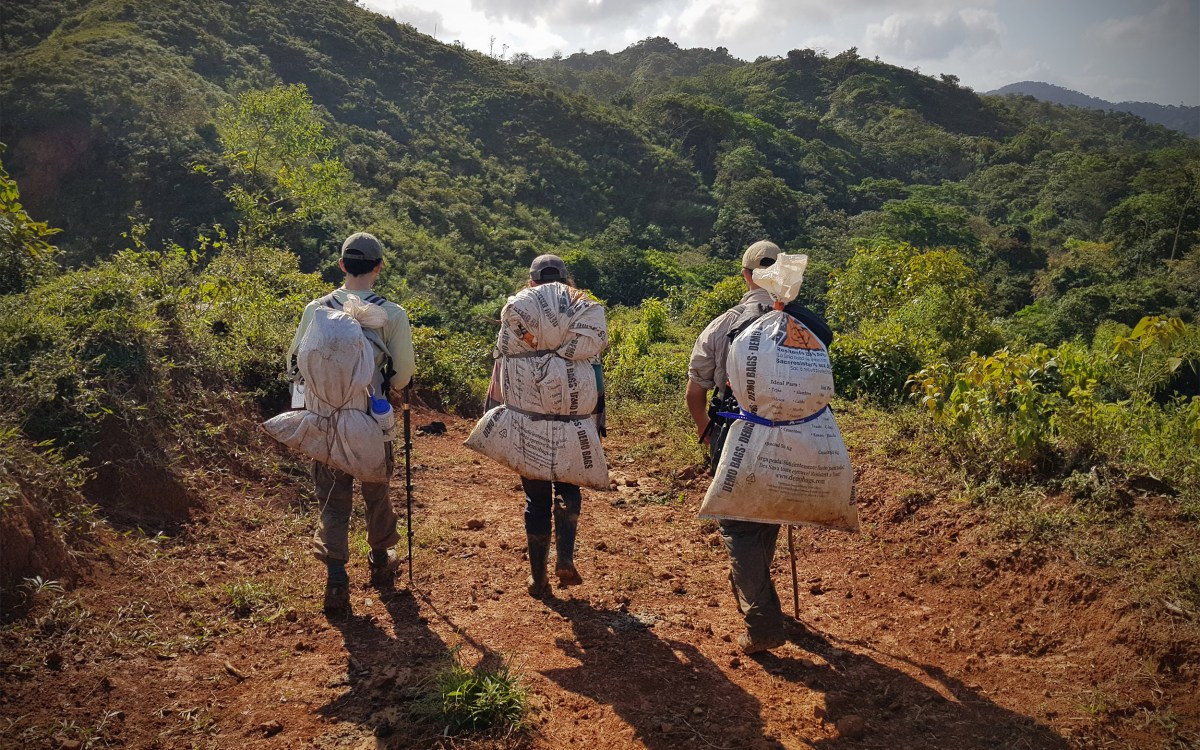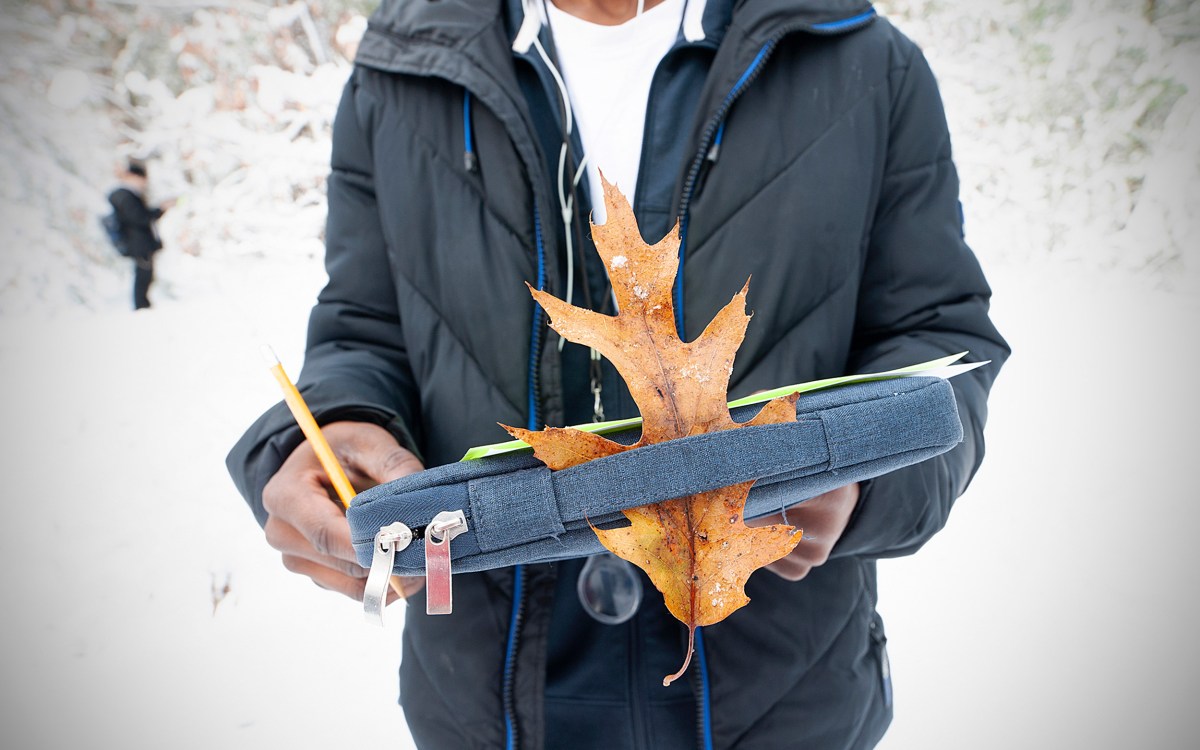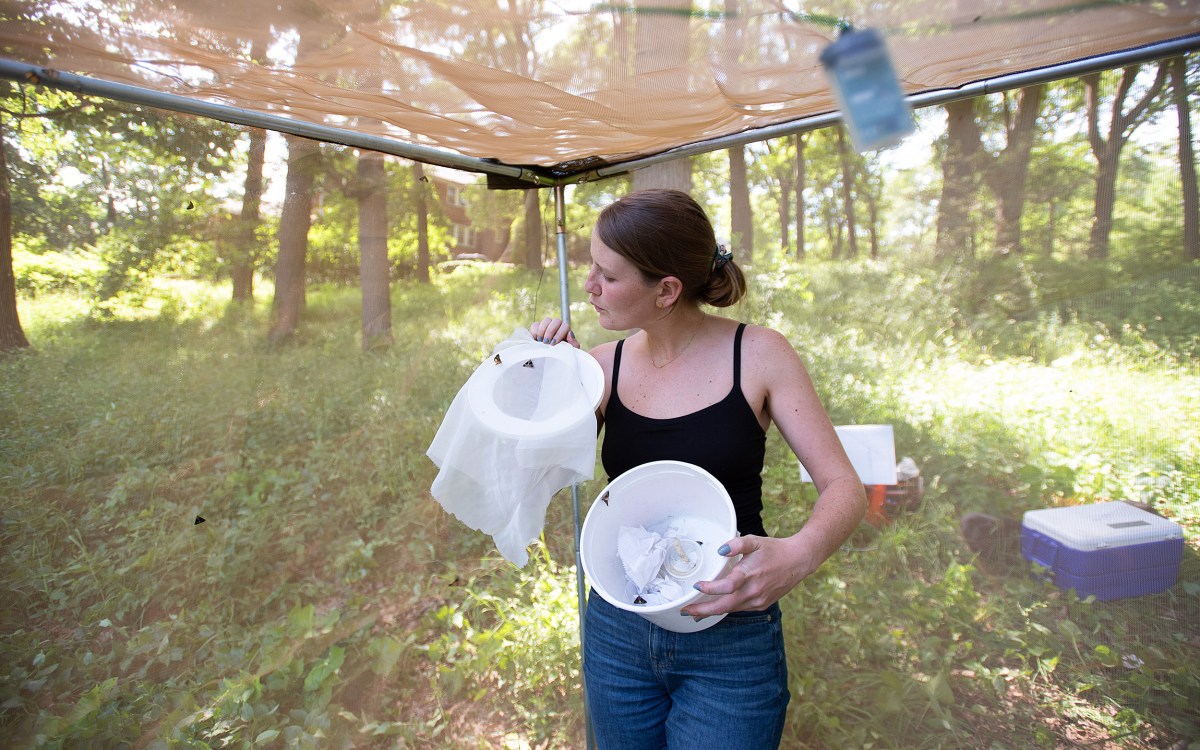How plants adapt to climate change
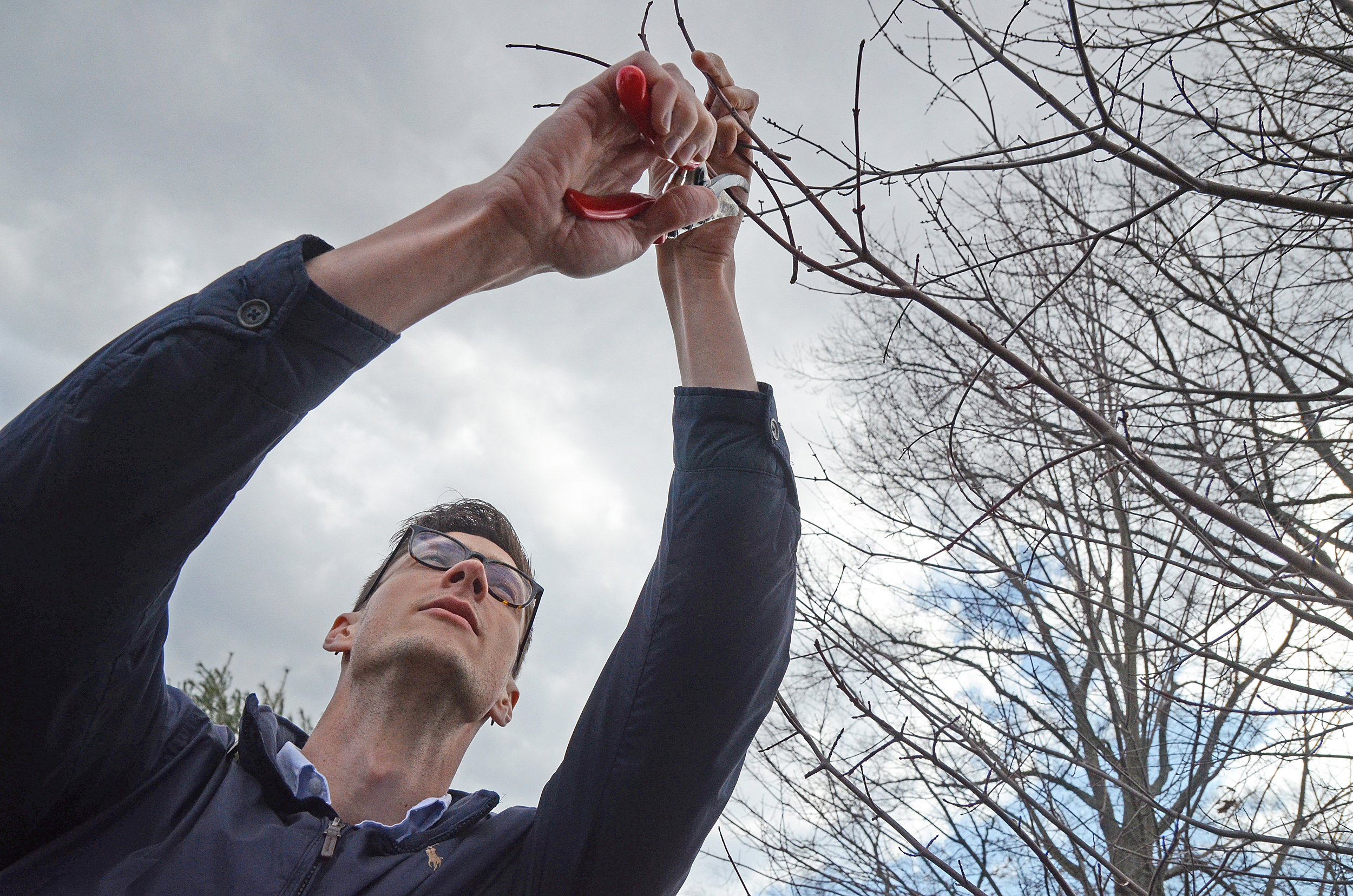
Al Kovaleski, Arnold Arboretum Putnam Fellow, clips 1-year-old growth from a red maple tree in the Arboretum’s collections to use in cold hardiness experiments on the freeze tolerance of maples.
Photos by Ben Goulet-Scott/Arnold Arboretum
Researchers at Arboretum are studying maple trees and cold hardiness
This year’s dramatically fluctuating temperature cycles from seasonably cold days to atypically warm stretches and back again has affected the life cycles of many species, including plants. At the Arnold Arboretum of Harvard University, two scientists are examining how maple trees (Acer) are responding to climate stress and what that means for the future of the genus. Jake Grossman and Al Kovaleski, Putnam Fellows at the Arboretum, are modeling the evolution of the maples located in the Arboretum’s living collections, examining their 60 million-year journey from their origins in East Asia to current global distribution. By learning how the trees withstand low temperature stress in their tissues and respond to warm spells when they are dormant — called “cold hardiness” — they can help predict outcomes of climate change for maples, and other trees in Northern Hemisphere forests, and potentially even crops and agriculture. We asked the researchers what they are learning about how plants adapt and evolve to climate change and what it means for New England and beyond.
Q&A
Jake Grossman and Al Kovaleski
Gazette: Does the rate of climate change impact a species’ ability to evolve and adapt to weather conditions?
Grossman: Climate change does two things to weather. First, over time, average weather conditions change. The most obvious example of this is that our climate is getting warmer. So, every year, the average low temps and, to a lesser extent, the average high temps get higher. Second, climate change increases variability in weather. So, some years feature multiple extreme snow or rainstorms and flooding whereas other years feature droughts. This is already happening, but humans can still control how fast it happens, and that matters to plant evolution.
One way of thinking about this is in terms of “generation time” — the years from when a maple seedling sprouts to when it produces its own first daughter seed. This probably ranges from 10 to 30 years for maples. Maples have been evolving independently as a genus for about two million generations. This means that if you traced back any given maple tree two million generations, you would hit the grandmother of all maples. During that time, the climate changed a lot, going from periods in which there was no ice anywhere on earth through several ice ages, and maples evolved along with it. By 2200, in about seven maple generations, the climate could change so much that it resembles a past extremely hot climate that the world hasn’t seen for roughly 1.5 million maple generations, or 50 million years. Maples will probably be able to survive somewhere on Earth in this new, hot climate, but they absolutely will not be able to evolve to be adapted to it in seven generations. For reference, our hominid ancestors began using tools only 1.8 million years — or 60,000 maple generations ago, so this future climate scenario will also be totally unlike anything we have ever seen.


Jake Grossman uses a conductivity probe to assess the damage caused by the freezing of a maple twig in the Arboretum’s Weld Hill lab. Grossman and Al Kovaleski use liquid nitrogen to cause the deep freeze.
Kovaleski: Another thing we have to consider when studying the adaptation of plants is their plasticity, how plants can mold themselves to the conditions they are exposed to. As Jake mentioned, there is year-to-year variation in weather, and plants respond slightly differently each year to accommodate this variation. This means that the same plant adapts to a range of climates. This is important to acknowledge because a lot of times we’ll see that the climate is changing, but plants still seem to be adapted to it. However, they’re being continuously pushed toward their limit now — even if we can’t perceive it. The early onset of spring this year can leave plants at an extreme risk of great damage should a late freeze occur.
Gazette: Is there a way to mitigate the negative effects of climate change on plants and crops?
Grossman: The best way to reduce the negative impacts of climate change on plants is through things like dramatically reducing emissions and creating policies to protect our environment in order to prevent further climate change. But given that we are already committed to considerable climate warming, we can manage our forests and farm fields, gardens and parks to be more resilient to the warmer temperatures and more erratic patterns of rain and snow that we will experience in the future. This could mean experimenting with planting more drought-tolerant species in New England with the expectation that our climate here will continue to get warmer and more drought-prone. Or it could include “assisted migration,” when we plant seeds or whole plants in areas that might not be ideal for them now, but where they might thrive in future climate scenarios.
Kovaleski: For crops, we can consider crossing populations that are already well-adapted to different climates to generate a new population that is expected to be intermediate in its climatic adaptation. This is what plant breeders work on continuously for all crops: adapting them to emerging climate conditions, as well as pest resistance, nutritional quality, etc. Blueberries are perhaps the best example of a very successful story. What was done was crossing highbush blueberry plants with good fruit quality that are native to temperate climates with other species that are native to warmer climate regions in the southeastern US but didn’t have very good fruit. By doing this, breeders were able to combine the fruit quality with the adaptation to a warmer climate, thus generating what is now called the southern highbush blueberry.
Gazette: How might the warmer winter temperatures we are experiencing now impact the production of New England maple syrup?
Grossman: For ideal maple syrup production, trees need to experience cold nights and relatively warm days. This causes sap to move rapidly through a maple’s trunk, which creates opportunities for us to siphon it off. Often times, our warming climate manifests as an increase in daily low temperatures, rather than an increase in daily high temperatures, producing less extreme cold-warm cycles over a day. This might make sap less mobile, harming syrup production. On a larger level, climate change is projected to reduce sugar maple abundance in New England, which means fewer trees will be available to tap.
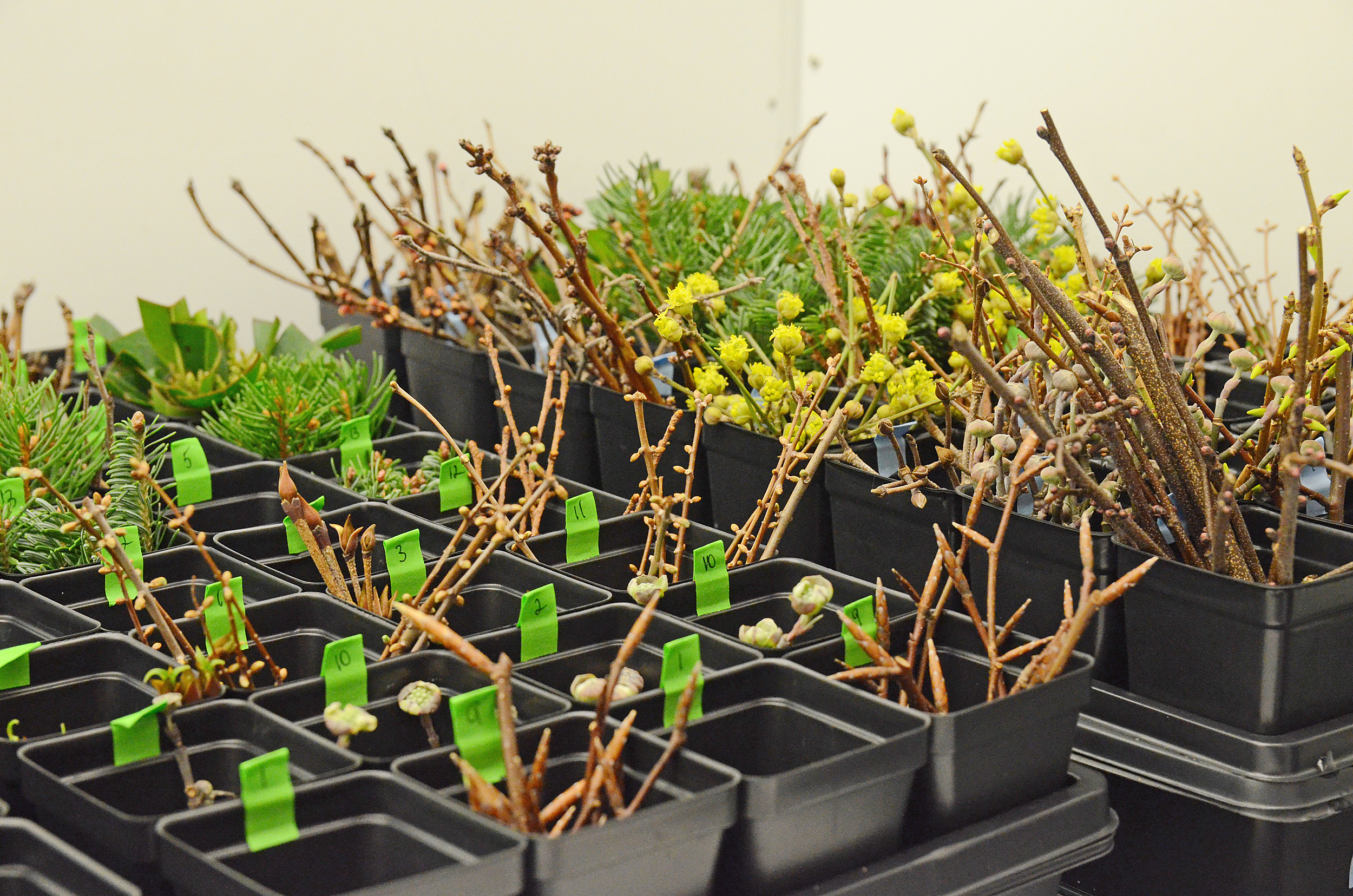
Gazette: The Arboretum has a diverse collection of maples — including rare and endangered species from around the world. What is the effect of this research on the Arboretum’s collection? What is the effect on United States forests?
Grossman: Our research helps us understand more about the response of maples to what we might call climate stress — the environmental factors that challenge woody plants and that are likely to get even worse as our climate changes. Our findings will help the Arboretum’s managers decide which maples to seek out and plant — species that will be able to survive here in the future. They also will help staff keep the existing maples alive by, for instance, informing irrigation priorities. When we think about forests overall, maples are dominant trees in eastern deciduous forests and important sources of wood, syrup, and other things. Knowing how climate stress affects particular maples species will help foresters, conservationists, and other land managers to prioritize the planting, care, and harvest of natural forests, plantations, and urban woodlands.
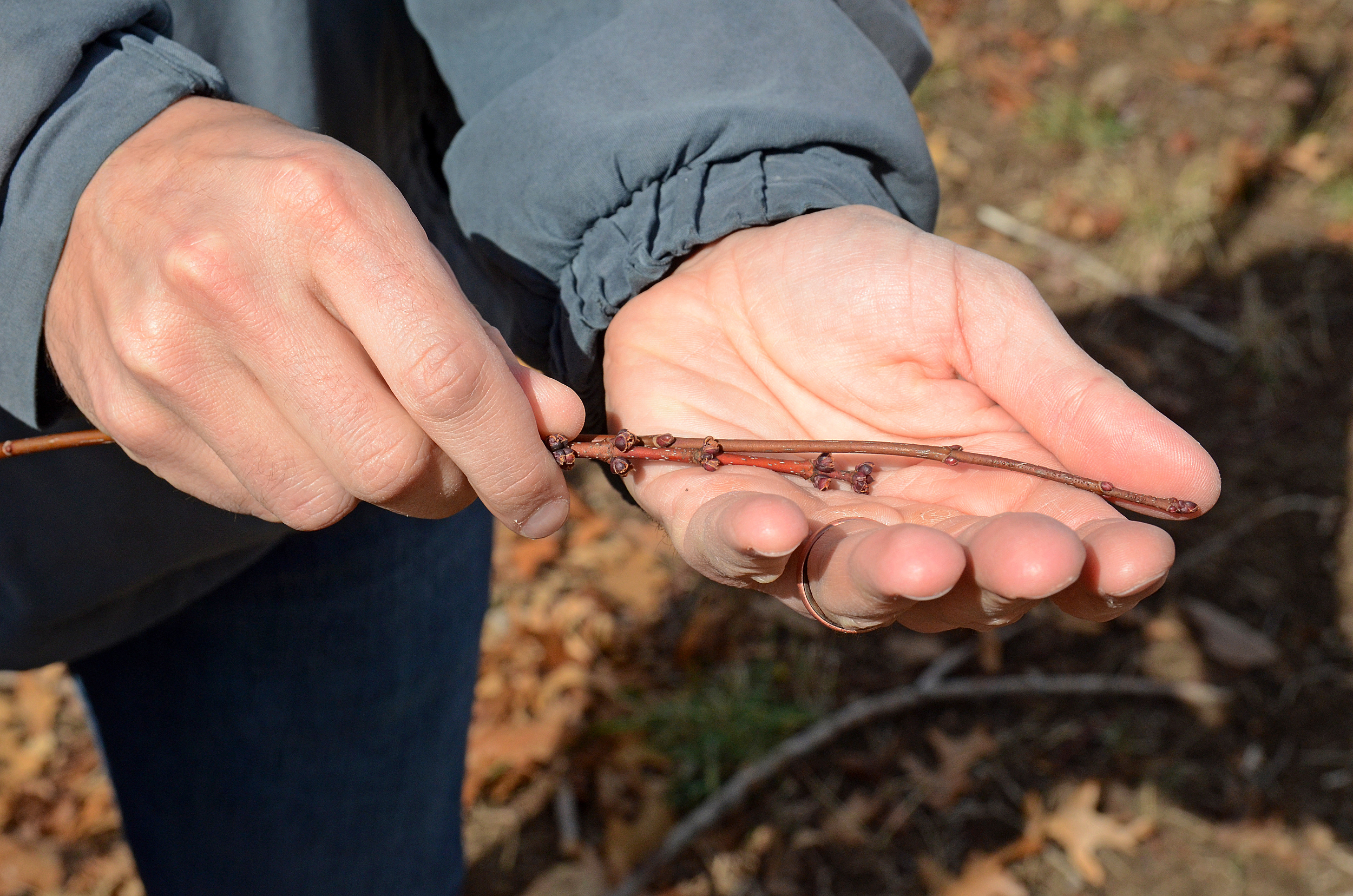
Gazette: Can maple species fail?
Grossman: It is maybe best to think about failure in terms of individual trees, and the answer is yes. For instance, all trees have small tubes that extend all the way around their trunks, these are called xylem. Their purpose is to conduct water from the ground to the leaves at the top of the tree, and everywhere in between. During exceptionally warm conditions, if a particular tree’s soil becomes really dry, bubbles form in these tubes. When that happens to a particular xylem tube, it is unusable forever. If most or all of a tree’s xylem gets emptied out — or cavitated — the tree dies. Or with freezing, we could imagine that a particular maple tree has been exposed to warm weather for several weeks. It begins to send out new leaves and flowers because it has received signals that spring has arrived. If a really cold period moves in, this tender, actively growing material might freeze or get dried out. If so, the tree has now lost its investment in a whole cohort of leaves or flowers. If it is a small or already weak tree, it may have trouble replacing them and could starve to death in the coming year. Finally, if we want to think about the ultimate “failure” of a particular species, that would be something like extinction. This is certainly possible, although it often takes a long time for long-lived trees like maples. If humans are not overharvesting a species, it takes a long time for total climate-induced extinction to affect a long-lived woody species.
Kovaleski: Adding to Jake’s example of freezing, which is more easily observed because you could see green tissues on the tree or plant, this can also happen within the buds of the plants before they’ve gone through any visible changes. If the temperatures drop below the cold hardiness level a certain plant has, the buds can be killed and they just won’t grow the following season, without a very clear sign — unless you are scientifically tracking the cold hardiness of things throughout the winter.
Gazette: What does the broader impact of your research mean for scientists working on climate change mitigation around the world?
Grossman: Our research helps demonstrate the consequences of climate change for temperate forests, urban trees, and forestry plantations. Hopefully, if people know more about what is likely to happen, they will be motivated to mitigate climate change. From an adaptation angle, our research can guide management of trees and forests in a rapidly changing climate.



